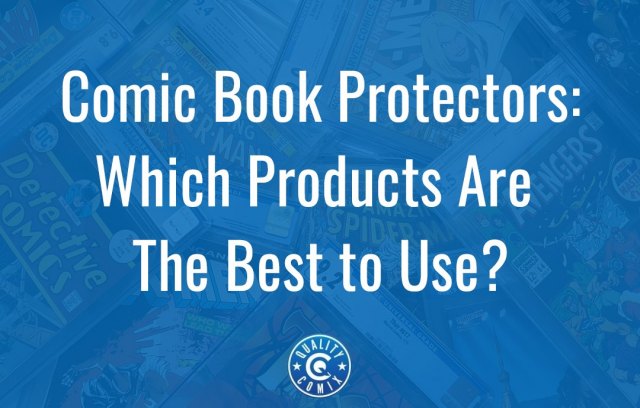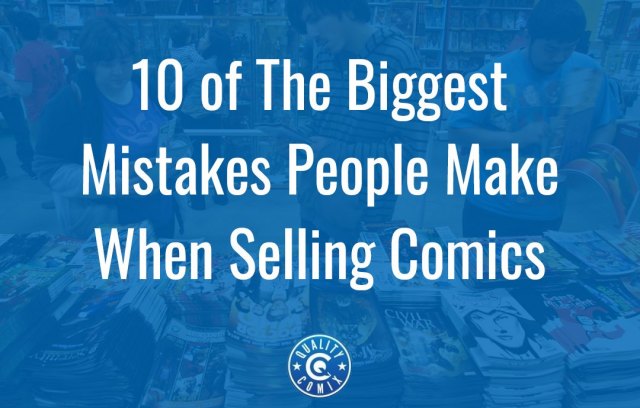![[Guide] How to Evaluate the Condition of Your Comic Books](https://www.qualitycomix.com/images/size_l/news-000161.jpg)
With comics, the condition is extremely important. It's second only to age in terms of how value is derived from comics, so it's incredibly important to keep your comics in good condition.
What even is "good condition" though? And do you even need to know? Let's talk about it.
Table of Contents
What is Good Condition in Comic Books?
When a comic book is printed, it comes out of the printer in pristine condition. The pages are crisp and aligned, the staples are carefully folded in the middle of the binding, and there are no creases, no dirt, no scratches. The ink is vibrant and crisp, the blacks are almost light-absorbing, and the whites are blinding and clean. It's a sight to behold.
The comic is packaged up and sent to its destination, and it all goes downhill from there.
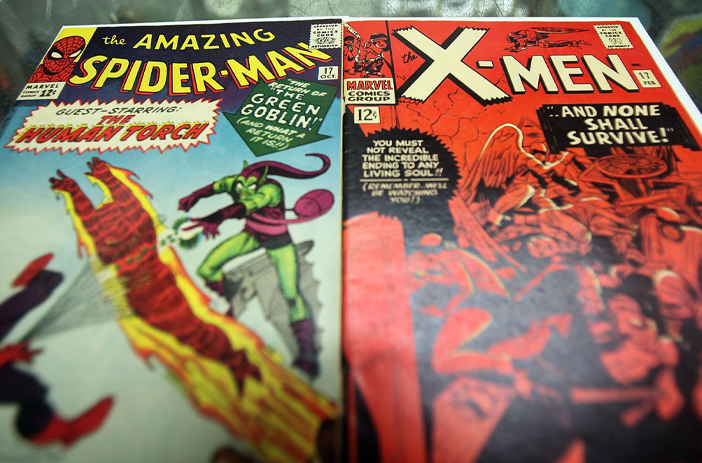
Many things can damage a comic.
- Use. Opening a comic strains the pages, wears around the staples, and has the potential to add bends, creases, and even tears to the pages.
- Storage. Putting a comic away improperly can lead to sagging, creasing, chipping, and even water damage.
- Sunlight. UV radiation in the light can damage comics, fading ink and making the paper brittle over time.
- Time. Entropy is one of the unstoppable forces of reality, and no matter how hard you try to fight it, everything will one day return to dust.
The closer a comic is to that original, pristine condition, the higher the quality of the book, and thus, the more valuable it is as a specimen of its line.
Do You Need to Know How to Evaluate the Condition of Your Comics?
Yes and no.
Knowing how to examine a comic and evaluate its condition is a key part of being able to appropriately price and sell those comics. If you estimate a book at 9.0 and it's actually 9.7, you could be losing a lot of money. Conversely, if you list a comic at 9.5, but damage visible in pictures makes it more of an 8.5, people will feel scammed if they buy it or think you're inflating the price beyond what it's worth.
At the same time, most people don't know how to properly evaluate the condition of a book beyond vague grade categories. And, honestly, most people don't need to. That's because there are professional services that do that estimation for you.
In fact, whatever you estimate the grade of a comic to be, your estimation is meaningless until an actual grading company evaluates it. It could turn out higher or lower than your estimation, but either way, until it's assigned a grade and encapsulated in a slab, you don't have third-party verification, and the grade is subject to re-evaluation.
Of course, not every comic is worth grading. Selling a bunch of early 2000s non-key comics for $1 each isn't going to really matter whether the grade is high or middling, and low-grade comics that were printed in the millions probably aren't even worth keeping.
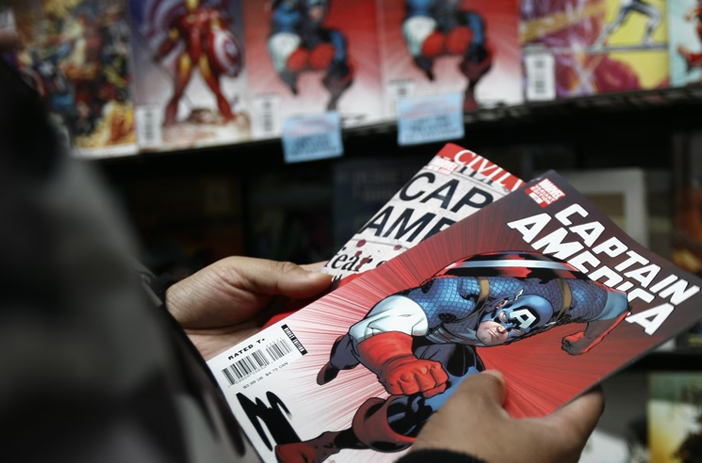
Image source: The Atlantic
So, knowing how to evaluate the condition of comics is useful if:
- You're going to be frequently buying and selling comics and need to know the conditions to estimate prices.
- You have a large collection you want to start selling, and you want to be able to estimate the value of the comics you have.
- You want to work for a company like CGC as a professional grader.
On the other hand, being able to estimate the grades isn't really important if:
- You're just a casual collector and don't plan to be buying high-end or expensive comics.
- You're fine with selling your comics in bulk, on consignment, or without putting that much work into it.
- You're planning to just send your comics to a grading company and let them do the work.
- The comics you want to evaluate will only have a few cents or a few dollars of difference between them, so a specific grade isn't hugely impactful.
It's all about your goals with the comics, both now and in the future. Honestly, I find that knowing how to estimate grades is a good skill to have when you're interacting with comics all day, but I can certainly see why it might not be anything more than a curiosity for many people.
So, is it worth getting a comic graded at all? The answer is, in general, yes. While you might potentially power the number of people willing to buy the comic – since some people don't have the budget for or interest in slabbed comics – the increase in value is worthwhile, and serious collectors will frequently only deal in graded and slabbed comics.
What Damage is Most Important in Comics?
Different kinds of damage can be more important than other kinds of damage. Two blemishes, equal in scope, might reduce the grade and value of a comic by different amounts.
A common example of "damage" to a comic, particularly older comics, is that the formerly-white paper is yellowed or browned with age. This just happens over time to old papers, and it's why old books have brown pages, old papers are yellowed, and more. While off-white and yellowed pages certainly reduce the grade of comics, it's basically impossible to have comics past a certain age that aren't at least a little off-color, so it's not as much of an impact as other kinds of damage.
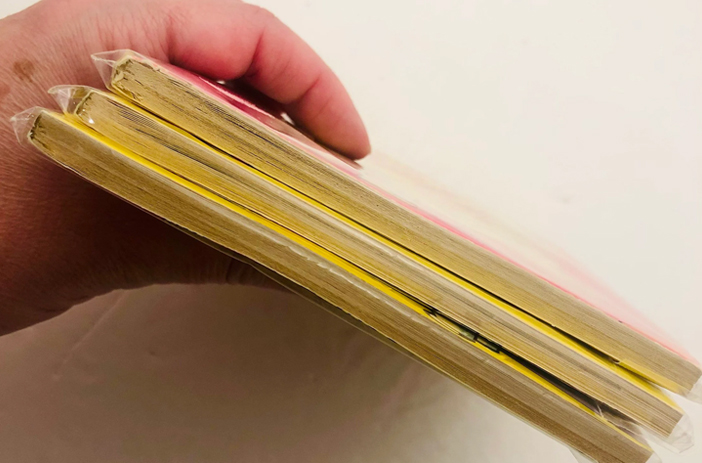
Image source: Etsy
Missing elements are also very common with comics of a certain age. In fact, for many comics that had pack-in stickers, temporary tattoos, 3D glasses, coupons, or other extras, you might be hard-pressed to find any copies of a comic that are complete. A complete version would be significantly more valuable, but the baseline value mostly just assumes those pack-ins are lacking.
Some damage is relatively minor and can be removed. Pencil marks, small divots, and dirt; these kinds of damage can be removed with a process known as cleaning and pressing. Cleaning means going page-by-page and using things like erasers and very, very light solvents to remove blemishes that can be removed. Then, pressing uses humidity to soften the paper, and weights with flat panels to press physical divots, creases, and other marks out of the pages, leaving them flat again.
You can read a whole lot more about pressing and cleaning in my complete guide over here.
Of course, other kinds of damage can't be removed and affect the value of a comic a lot more. Scratches that remove ink, tears in the pages, missing covers, missing pages, rusty staples or missing staples, major creases, ink loss; these kinds of things can't be cleaned, they would have to be repaired, and repairing a comic is considered a no-no by the community.
If you want to know more about what kind of damage affects the value of a comic, I wrote a guide on that, too, found here.
What Are the Different Conditions of Comics?
So, you're interested in evaluating the condition of comics. How can you do it? Here's an outline of the process and what to look for.
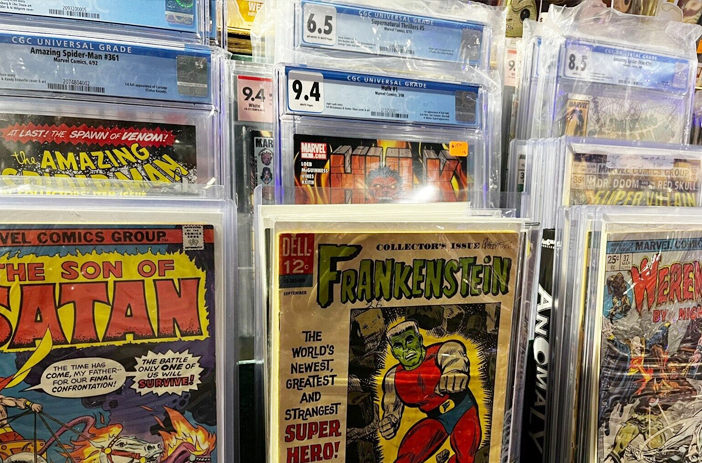
Image source: eBay
First, let's look at the actual grading scale used by CGC, the biggest of the comics grading companies.
- 10: Gem Mint, the highest grade assigned. The collectible must have no evidence of any manufacturing or handling defects.
- 9.9: Mint, the collectible is nearly indistinguishable from a 10.0 but will have a very minor manufacturing defect. It will not have any evidence of handling defects.
- 9.8: NM/M, a nearly perfect collectible with negligible handling or manufacturing defects.
- 9.6: NM+, a very well-preserved collectible with several minor manufacturing or handling defects.
- 9.4: NM, a very well-preserved collectible with minor wear and small manufacturing or handling defects.
- 9.2: NM-, a very well-preserved collectible with some wear and small manufacturing or handling defects.
- 9.0: FM/NM, a very well-preserved collectible with good eye appeal. There will be a number of minor handling and/or manufacturing defects.
- 8.5: VF+, an attractive collectible with a moderate defect or a number of small defects.
- 8.0: VF, an attractive collectible with a moderate defect or an accumulation of small defects.
- 7.5: VF-, an above-average collectible with a moderate defect or an accumulation of small defects.
- 7.0: FN/VF, an above-average collectible with a major defect or an accumulation of small defects.
- 6.5: FN+, an above-average collectible with a major defect and some smaller defects or a significant accumulation of small defects.
- 6.0: FN, a slightly above-average collectible with a major defect and some smaller defects or a significant accumulation of small defects.
- 5.5: FN-, a slightly above-average collectible with several moderate defects.
- 5.0: VG/FN, an average collectible with several moderate defects.
- 4.5: VG+, a slightly below-average collectible with multiple moderate defects.
- 4.0: VG, a below-average collectible with multiple moderate defects.
- 3.5: VG-, a below-average collectible with several major defects or an accumulation of multiple moderate defects.
- 3.0: G/VG, a collectible that shows significant evidence of handling with several moderate-to-major defects.
- 2.5: G+, a collectible that shows extensive evidence of handling with multiple moderate-to-major defects.
- 2.0: G, a collectible that shows extensive evidence of handling with numerous moderate-to-major defects.
- 1.8: G-, a collectible that shows extensive evidence of handling with numerous major defects.
- 1.5: Fa/G, a collectible that shows extensive evidence of handling with a heavy accumulation of major defects.
- 1.0: Fa, a very poorly handled collectible with a heavy accumulation of major defects.
- 0.5: Poor, a heavily defaced collectible with a number of major defects. Some pieces will also be missing.
Now, there are a few critical details of this scale that make it difficult to use objectively.
- What is "average"? It varies depending on the book. Average for a golden age Action Comics is very different than average for a mid-90s mass print comic.
- Missing pieces are only called out in the very lowest grade, but they don't immediately ruin the grade of a comic. A coupon or a pack-in being missing doesn't qualify; it's more talking about missing pages or a missing cover.
- None of these cover the page color or quality, which is its own scale seen on the same page.
Evaluating a Comic Yourself
Now that you know the scale, how do you actually go through and evaluate a comic?
First, be aware that you're going to be handling the comic. Make sure your hands and your surface are clean, and use good lighting. If the comic is in a slab, though, just read the grade on the slab and call it there. Otherwise, remove it from a bag-and-board or other container carefully.
Examine the covers. Are they glossy the way they should be? Is the ink vibrant or faded? Are there scratches, divots, fingerprints, or other blemishes? Is there chipping around the edges? Are the corners sharp?
Some of the most impactful parts of a comic are the gloss of the cover and the crispness of the edges and corners. Pay special attention to these. Also, take a moment to evaluate the overall "curb appeal" of the comic; what impression does it give you?
Next, look at the spine. Look for signs of creasing, particularly around the staples. Make sure the staples are there, the pages are there, and everything is as solidly in place as possible.
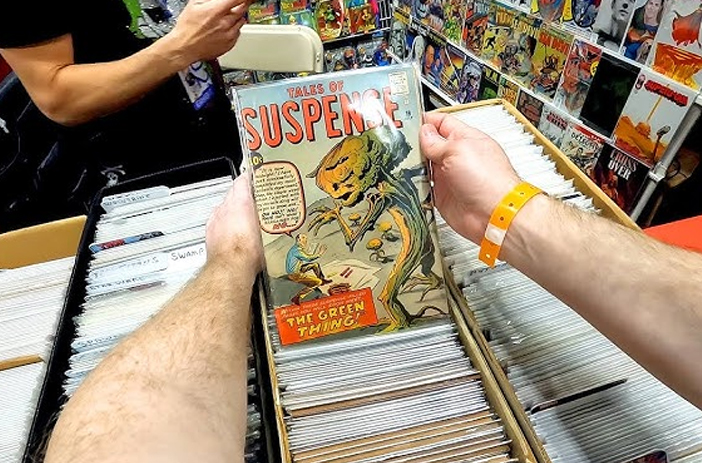
At this point, you can open the book. Be careful, especially with older and potentially brittle comics. Count the pages and make sure everything is firmly stapled in place. Look for signs of missing pages, torn pages, pages with blemishes on them, creased pages, and other damage.
You can also make an overall impression here. Look for the page color quality, both in terms of the inks and in terms of the underlying paper. Look for signs of foxing or water damage.
Once you have a solid impression, you can tally up blemishes and see where your comic might fall on the scale.
- Major defects and blemishes include things like torn pages, creases, ink loss, and other major issues.
- Minor blemishes include things like bent corners, bends without creasing, very small creases, wear around staples, chipping, loss of gloss, and other not-necessarily noticeable-at-first-glance issues.
Different people will interpret different blemishes at different levels of severity. This is why grading companies exist: to provide a more objective single point of authority everyone can rely on. Your estimation is good enough for a casual sale, but for anything truly valuable, consider the grading house before the auction house.

![[Guide] Where is the Best Place to Get Your Comics Graded?](https://www.qualitycomix.com/images/size_f/news-000079.jpg)
